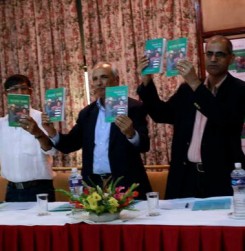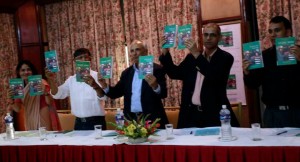
News
Healing the Wounds: narrative journalistic profiles of conflict victims released

Two handbooks documenting the voices of conflict victims and featuring information useful for them were released at a function in the capital Thursday.
The books, in Nepali and in English, present 10 first-hand accounts by victims in the form of narrative journalistic profiles written by journalists. They represent a cross-section of victims, including those killed, disappeared, disabled and displaced, during Nepal’s internal conflict between 1996 and 2006.
The stories show that progress has been painfully slow in dealing with past human rights atrocities and healing the wounds of war.
Ghauma Malam, and its English version Healing the Wounds, show that so far, government’s efforts in transitional justice remain confined to interim reparation with remedies elusive for more than 16,000 people who lost lives and many others who suffered during the conflict.
Compiled and published by the Media Foundation, with support from UN Peace Fund Nepal and OHCHR Nepal, the books include facts about post-conflict situations, transitional justice, and the human costs of wars globally and in Nepal. They also include information on what relief measures are available to conflict victims, and how they can seek help or access justice.

Media Foundation chairman Bharat Dutta Koirala said the book release and discussion event aimed at drawing attention to the sufferings of the victims and the work of journalists who took time and heard the tales of woes from the victims.
Senior photo journalist Gopal Chitrakar read excerpts in Nepali from the narrative of Durga Maya Magar, 55, who became permanently disabled in the Badarmudhe bus ambush in June 2005. Chitrakar had covered the incident as a news event.
General Secretary at the Foundation Dharma Adhikari, who oversaw the research process for the publications, said the materials were designed as handbooks for victims. “But we also hope these stories will add some impetus to narrative journalism in the country,” he said.
Journalists said this was a good initiative to revisit stories of people trapped in the conflict situation. Yagya Shahi, representing OHCHR Nepal, said there are several untold stories which the journalists with interest and commitment can bring out.
Story authors, journalists themselves, described their experiences in reporting the stories in the words of the victims.
© Media Foudation- 2024 | Site by: SoftNEP